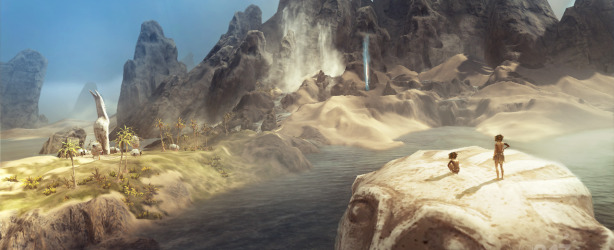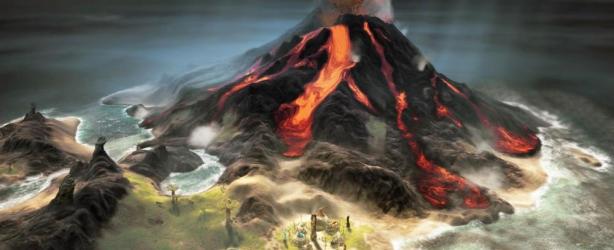
From Dust
Publisher: UbisoftPlatform: Xbox 360, PC, PlayStation 3
UK Price (as reviewed): £10.28 (inc VAT)
US Price (as reviewed): $15 (ex tax)
The days when the god games ruled a corner of the gaming universe have long since gone, but From Dust, designed by Another World developer Eric Chahi, tries to breathe life into the genre, and it's been dubbed a 'spiritual heir' to Populous by publisher Ubisoft.
Taking the role of a benevolent overseer, the player guides a tribe of primitive humans through harsh landscapes and directs them to build villages around totems. You help them on their way by reforming the land, pulling chunks of dirt out of the ground to dam or divert rivers and build bridges or causeways that your tribes can traverse. You're also given the ability to move globs of water and make solid stone walls by pulling magma from volcanoes and dropping them onto the earth.
The totems around which your tribes build villages can also sometimes grant particular powers that you can use to affect the world for a limited time, such as extinguishing fires, increasing the amount of matter you can grab at once, or our particular favourite: turning all the water to jelly, meaning you can pull lumps out of it and build wobbly, translucent towers. These give you a tremendous sense of control over the area, and the well timed use of these powers can instantly turn the tables in a level.
At first, reforming the terrain is a compelling experience. For some of the earlier levels, we completely forgot about leading our tribes to the end-of-level portal as we played with the ability to divert rivers and mess with the highly satisfying water physics. Unfortunately, though, once you need to reform the landscape in specific ways, it quickly becomes frustrating.
Playing From Dust often feels like trying to build a sandcastle with bone-dry sand. As soon as you dump any earth that you've picked up, it slowly evens out and turns from the sizeable hill you intended to a shallow ridge over a matter of seconds. The situation is also worse if water is involved, as the game joins Dwarf Fortress on a very exclusive list of titles that simulate soil erosion. Creating a simple bridge for your tribes can therefore become a fiddly back-and-forth exercise, which isn't helped by the fact that you're manoeuvring a cursor with an Xbox 360 controller, as opposed to a mouse.
There are other frustrating elements too, such as the fire and water plants that are introduced in an early level. The former periodically spread flames to nearby trees that then spread rapidly across the map, while the latter vomit up any water they've collected as soon as fire reaches them. The idea is that you use the two to counter each other, but you often end up with situations where you place water plants to save your villagers from fire, but end up inadvertently drowning them instead.

MSI MPG Velox 100R Chassis Review
October 14 2021 | 15:04











Want to comment? Please log in.